 |
Home | Charity | Feedback |
Japan:
Hakone - Mt. Fuji,
Kyoto,
Osaka,
Tokyo
Osaka, Japan: Business first by Prakash Bang, Editor in Chief 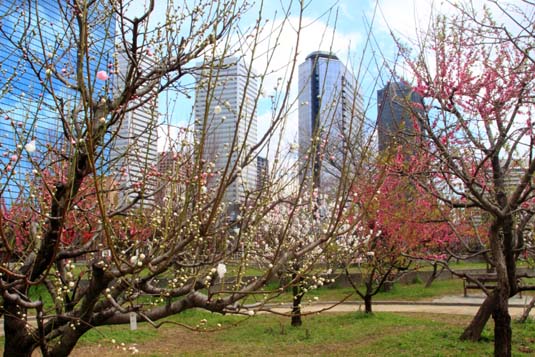 With a population of around 4 million, Osaka is one third the size of Tokyo. Despite its smaller size, Osaka can well be called the Commercial Capital of Japan. It's interesting to know that the nighttime population of Osaka is about 2.75 million which swells to 4 million during daytime - a proof about the city's importance as a commercial hub. Osaka drives Japanese economy to a large extent. 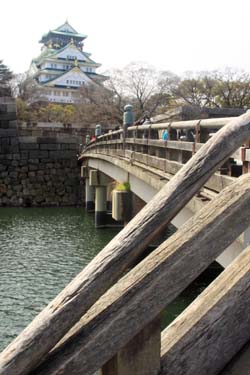 I landed at Kansai, Osaka's international airport late in the evening.
I checked in at Hearton
Hotel in Shinsaibashi area. I had reserved the next day for a visit
to Kyoto. My Osaka exploration would commence thereafter. Please refer
to my article on Kyoto that tells you more about airport transfers and
the hotel I opted for 3 nights.
I landed at Kansai, Osaka's international airport late in the evening.
I checked in at Hearton
Hotel in Shinsaibashi area. I had reserved the next day for a visit
to Kyoto. My Osaka exploration would commence thereafter. Please refer
to my article on Kyoto that tells you more about airport transfers and
the hotel I opted for 3 nights. I returned to Osaka from Kyoto at about 6 PM the next day. I had that evening on hand and only an additional day, after allocating time for business meetings. That was just about enough time, I guess, to capture the spirit of Osaka. Like all major cities in Japan, even Osaka has an efficient and wide network of subway trains. There are 9 important subway lines and between them one can easily stay in touch with Osaka. A day pass costs ¥850. If you are likely to hop on more than 4 times, it would make sense to go for the day pass. Else, buying individual trip tickets could be a good idea. Vending machines are an integral part of Japanese life. From buying travel tickets & passes to hot and cold beverages to condoms and cigarettes. There's no escape from carrying quite a handful of coins. Most vending machines would offer you the option of English language. If not, ask a passerby… in all probability he will be happy to help. 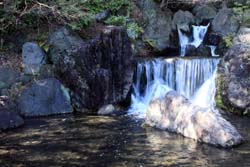 I was confused when looking for a ticket that would take me to Narita airport in Tokyo. A businessman (so I assume because almost everybody wears a black suit) actually stopped for a while helped me to buy my ticket and then he walked with me to the information kiosk to find out the walkway to the train track. He left only after ensuring that all was well with me. If that can happen in Tokyo, it can well happen in Osaka or other towns.
I was confused when looking for a ticket that would take me to Narita airport in Tokyo. A businessman (so I assume because almost everybody wears a black suit) actually stopped for a while helped me to buy my ticket and then he walked with me to the information kiosk to find out the walkway to the train track. He left only after ensuring that all was well with me. If that can happen in Tokyo, it can well happen in Osaka or other towns.
After alighting at Hankyu Umeda Station, we walked towards Shin Mido Suji (Street). The neighbourhood is home to a lot of department stores, shopping malls, electronic marts, hotels and commercial buildings. I was recommended to make a visit to Uniqlo, a garment supermarket well known for its attractive pricing. When in Japan, you may want to make a visit to this store which has branches across the country. The first two floors of the building were all things electronics. I had no business to be there, but their camera division attracted me in. An hour just passed by. No shopping of course. Most of the time it's cheaper to buy Japanese goods outside of Japan. That tells a lot about the high cost of living in that country. 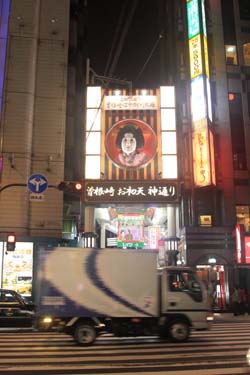 After spending an hour more walking around, we took a taxi to come over to Shinsaibashi area. Actually, by the subway it was just a couple of stations away, but since we were all tired by walking a lot in Kyoto, we paid the price. Dinner that evening was in a Japanese restaurant in one of the many in Shinsaibashi. Since it was early spring, a salad made from bamboo was the highlight of the meal. Of course, there were dozen other things to dig in… each tasted as good despite not knowing the art of using chopsticks!
After spending an hour more walking around, we took a taxi to come over to Shinsaibashi area. Actually, by the subway it was just a couple of stations away, but since we were all tired by walking a lot in Kyoto, we paid the price. Dinner that evening was in a Japanese restaurant in one of the many in Shinsaibashi. Since it was early spring, a salad made from bamboo was the highlight of the meal. Of course, there were dozen other things to dig in… each tasted as good despite not knowing the art of using chopsticks!
I had scheduled my meetings post 4 PM the next day. That would allow me to utilize my morning and most part of the afternoon to explore Osaka… the tourist thing. With the limited time on hand, I decided to visit Osaka Castle, Expo '70 Park and on the return leg walk Shinsaibashi. The Universal Studio and the Aquarium in Osaka would have been other attractions, but I had to ignore those. Since it called for a liberal use of the subway, I opted for the day pass. Y850 was well worth it. Directly from the Shinsaibashi underground, the Nagahori line took me to Osaka Business Park station - the gateway to the Osaka Castle. The walk from the station to the castle is about 20 minutes but does offer great views of skyscrapers, the moat, the castle garden and the castle itself. 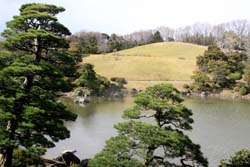 The Osaka Castle has had a very turbulent history. Right from 1566 to all the way up to 1931, when the castle, with the help of public efforts and enthusiasm brought about the constructions of the main tower which is a museum today. Between 1566 and 1931 the castle was burned down 3 times. The massive gardens around the castle were brutally damaged during air raids of World War II.
The Osaka Castle has had a very turbulent history. Right from 1566 to all the way up to 1931, when the castle, with the help of public efforts and enthusiasm brought about the constructions of the main tower which is a museum today. Between 1566 and 1931 the castle was burned down 3 times. The massive gardens around the castle were brutally damaged during air raids of World War II.
Walking past the Peach Blossom Garden and crossing over the Gokuraku Bashi bridge, I reached at the base of the castle. The castle, which is now a museum, is 8 floors tall. Each floor has a theme and will be of much interest to the history buff. The 8th floor is an observatory that offers panoramic view of Osaka city. Whilst visit to the castle premises and its gardens is free of cost, the fee for museum entry is ¥600. I avoided the museum for lack of time but did spend some time walking around various gardens namely the Japanese Garden and the Nishinomaru Garden. There were cherry blossoms but not in full bloom despite the predictions of being so by the meteorological department. More about cherry blossom and the Sakura in my article on Kyoto. 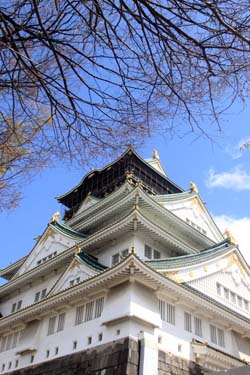 Just outside the Osaka Castle premises is the Osaka Hall. A massive enclosure that houses exhibitions and events. Right in the front of the Osaka Hall is where Nishio Trains (toy trains for tourists) makes a halt. ¥200 will give you a fun ride of about 10 minutes bringing you to Kyobashi Station on the JR (Japanese Railway) Loop Line. Our next stop was to Expo - a destination pretty far away.
Just outside the Osaka Castle premises is the Osaka Hall. A massive enclosure that houses exhibitions and events. Right in the front of the Osaka Hall is where Nishio Trains (toy trains for tourists) makes a halt. ¥200 will give you a fun ride of about 10 minutes bringing you to Kyobashi Station on the JR (Japanese Railway) Loop Line. Our next stop was to Expo - a destination pretty far away.
The subway day pass is not eligible for rides on over ground trains. Instead of walking another 20 minutes to the nearest underground station, it made sense to spend ¥230 to use the JR Loop Line that will take me to Osaka Station. From this station I could change to Midosuji Subway Line and reach the line's last stop - Senri Chuo. I did just that. To reach the Expo Park I would need to take the monorail from Senri Chuo and alight at Banpaku-Kinen-Koen. The walk from the metro station to the monorail station took me through a large mall and its open atrium which, for the day, was the stage for auditions to select the Japanese Idol. The place was full to the brim with young people, some seriously engrossed in discussing on how to become the next star! There were phenomenally long lines at McDonalds and Starbucks. Another ¥230 got me the monorail ride that lasted for 6 minutes to Banpaku-Kinen-Koen - the gateway station to Expo Park. Expo '70 Commemorative Park is situated on the site of the 1970 Japan World Exposition. It is a multipurpose park surrounded by flowers and greenery and is equipped with cultural, sporting and recreational facilities built in tribute to the successful event. My prime motive of the visit to the park was to walk below the hundreds of cherry trees (about 50% in bloom) and visit the beautiful Japanese Garden. 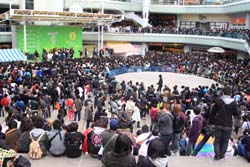 Entrance to the park is ¥250. And is well worth it. No matter what the season, you are bound to experience some enchantment. From the Plum Blossom in February to the coloured Maple Leaves in December. Sandwiched between the two ends would be Cherry Blossom, Azalea, Iris, Hydrangea, Lotus and Water Lily.
Entrance to the park is ¥250. And is well worth it. No matter what the season, you are bound to experience some enchantment. From the Plum Blossom in February to the coloured Maple Leaves in December. Sandwiched between the two ends would be Cherry Blossom, Azalea, Iris, Hydrangea, Lotus and Water Lily.
You are welcomed to the park by the Tower of Sun - a well known symbol of the Expo '70. The height of the structure is 65 meters and has three faces - each one depicting the past, the present and the future. This is one of the most famous work of art created by artist Taro Okamoto. In the magnificent garden which employs the most exquisite Japanese landscape gardening techniques, one can enjoy a pleasant walk in the timeless spirit of Zen tranquility. Visitors can trace the changing gardening styles from ancient times to the present as they stroll along the stream. 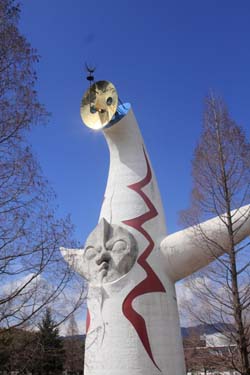 A quick trip through the park took 2 hours. Time to rush back to town to do some walking around Shinsaibashi. The return route was similar except that we alighted directly at Shinshaibashi.
A quick trip through the park took 2 hours. Time to rush back to town to do some walking around Shinsaibashi. The return route was similar except that we alighted directly at Shinshaibashi.
No visit to this lively neighbourhood would be complete without walking through Shinsaibashi Suji - a covered street reserved exclusively for pedestrians. This street must be at least a mile long on both sides of which are stores, restaurants, pubs, tea houses, entertainment arcades and what have you. Talking of gaming arcades, Pachinko steals the show. I am sure it must be a craze as alleys and alleys of Pachinko machines are thronged by young and old alike. I like to believe that's Pachinko is a national pastime - both for amusement and gambling. Running parallel to Shinsaibashi Suji is the Mido Suji Avenue and perpendicular to it is the Nagahori Street. Home to high value brand stores and commercial buildings, these roads are indeed for people in the fast lane… literally. At the scheduled time we were ready to negotiate business. Post which was another great Japanese meal. The next morning I would leave early to Odawara - my base station to explore Hakone and the Japanese icon - Mount Fuji. Osaka Image Gallery  Photo viewer Photo viewer
|
|
|
Home |
Charity |
Feedback
Privacy Policy | Terms of Usage © YoGoYo.com. All rights reserved. |



-osaka-japan.gif)

















































